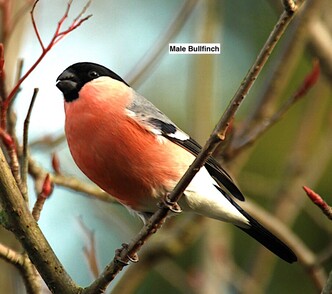|
19/7/2021 0 Comments Breeding Birds on Parkwood SpringsEach March and June a Breeding Bird Survey for the British Trust for Ornithology is carried out at the kilometre square SK3489, most of which covers our great Sheffield urban park, Parkwood Springs. This is not a complete study of birds to be seen on Parkwood Springs - for that, you can read the more thorough bird survey on this website. What is the ‘Breeding Bird Survey’? For the Breeding Bird Survey you have to follow two paths across the kilometre square, SK3489, in the early morning, once in early spring and again in early summer. For the survey you have to walk the paths over about 45 minutes each, noting every adult bird seen and heard. Thousands of other volunteers do the same, every year, for kilometre squares all over the country. These survey-sites are chosen by the BTO to create a record of birds across urban, rural and industrialised areas and all habitats. They help build a picture of how birds are doing, which species are thriving and which are in decline. In turn that is used by the BTO and other campaigning groups to argue for better ‘green’ policies, especially important when so many habitats and species are seriously threatened. Which paths do are used to record Parkwood Springs’ Breeding Birds? The paths were chosen by a previous BTO volunteer which were taken over from when they retired. One of the kilometre paths is beside the River Don, along Club Mill Road, from its beginning at Neepsend Lane and one kilometre stretches up hill from Vale Road, beside the old Ski Village site, to the viewpoint and down the path besides the housing near Penrith Road. Some highlights of birds recorded on Parkwood Springs Here are some of the less common birds for you to look out for, too, in our lovely local urban parkland (N.B. all images are taken by myself, and most very locally, though not on Parkwood Springs itself - it isn’t possible to do the survey and take photos at the same time!) Along Club Mill Road beside the river and through the industrial estate Sand Martins and Swifts are regularly recorded, as well as flitting Grey Wagtail, fleeting glimpses of wonderful Kingfishers and dipping Dippers, this year including a young Dipper with its parent, feeding in the river Don. Mallards and Moorhen are common. Along both kilometre paths there are Chiffchaff, Willow Warblers, Great Tits, Coal Tits, Long-tailed Tits and Blue Tits, Goldfinch, Bullfinch, Chaffinch, many Wrens and Robins, singing Song Thrushes and Blackbirds and of course more common species like Magpie, Wood Pigeon and Carrion Crows, to name a few. Along the second path Buzzards are increasingly to be seen and heard, along with Sparrowhawks and a Kestrel family and it is especially good to see several pairs of Lesser Whitethroat which are clearly breeding successfully. Once, Skylark's singing have been heard - maybe we will get more regular Skylarks as well as other grassland nesting-species as the old Veolia ‘tip’ site becomes more established as a grassland hill. A family of Great Spotted Woodpeckers was clearly visible, too, this year.
These are only some of the species seen in the times when the Breeding Bird Survey is recorded. We hope, as more habitats are created over the next few years, there will be even greater diversity on Parkwood Springs than there is now.
0 Comments
Leave a Reply. |
|
About us |
Resources |
|








